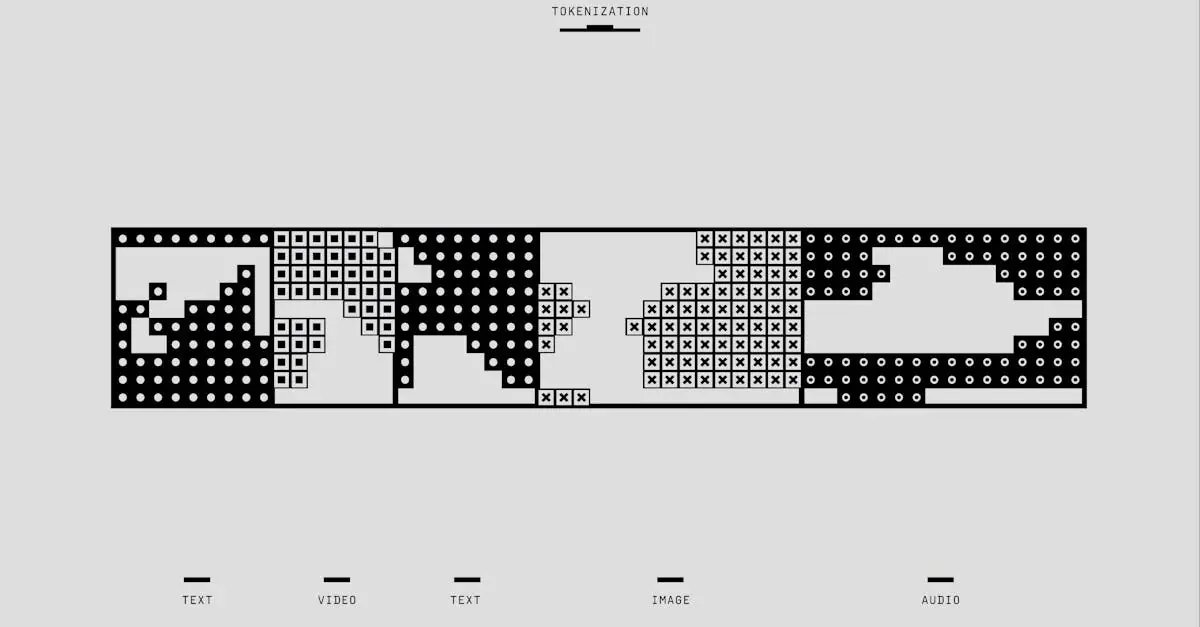In a world where data breaches and centralized control feel like a bad sitcom, distributed blockchain systems swoop in like the superhero no one saw coming. Imagine a digital ledger that’s not just secure but also decentralized—no single point of failure and no more waiting for the IT guy to fix things. It’s like having your cake and eating it too, but without the calories!
Table of Contents
ToggleOverview of Distributed Blockchain Systems
Distributed blockchain systems serve as a transformative framework, addressing issues related to data security and centralization. These systems feature a decentralized digital ledger, enhancing data transparency while reducing the risk of unauthorized access. Transactions occur across multiple nodes, eliminating single points of failure and increasing resilience against cyber attacks.
In this setup, each participant maintains a copy of the ledger, fostering trust and accountability among users. By enabling consensus through mechanisms like proof of work or proof of stake, distributed blockchain systems ensure that all transactions are validated independently. These validations happen in real time, creating a seamless experience for users.
Scalability represents another key advantage. As more nodes join the network, the system becomes more robust and capable of handling higher transaction volumes. Additionally, distributed blockchain systems support various applications, from cryptocurrencies to supply chain management.
Security remains paramount, with every transaction encrypted and linked to previous transactions forming an immutable chain. Any attempt to alter past data becomes evident, thus deterring fraud and unauthorized modifications.
Enhancing operational efficiency proves crucial for businesses leveraging these systems. With no central authority required for transactions, speed and cost-effectiveness improve significantly. Users can execute transactions without intermediaries, reducing fees and waiting times.
Various sectors, including finance, healthcare, and logistics, are adopting distributed blockchain systems to streamline operations. Such innovations promise to redefine how data is managed, shared, and secured across industries.
Key Components of Distributed Blockchain Systems
Distributed blockchain systems consist of several critical components that ensure their effectiveness, reliability, and security. Two primary elements include nodes and consensus mechanisms.
Nodes
Nodes represent the individual participants within the blockchain network. Each node holds a copy of the entire ledger, contributing to data redundancy and security. They communicate with one another to relay transactions, ensuring fast and accurate updates across the network. Some nodes function as full nodes, maintaining complete records, while others operate as lightweight nodes, validating transactions without storing complete data. This diversity enhances the overall resilience of the system. More nodes contribute to increased robustness, preventing single points of failure while maintaining decentralization.
Consensus Mechanisms
Consensus mechanisms validate transactions within distributed blockchain systems. Various types include proof of work and proof of stake, which serve to ensure all nodes agree on the current state of the ledger. Proof of work delves into computational challenges, requiring nodes to solve complex problems for block validation. In contrast, proof of stake relies on the amount of cryptocurrency held by participants, allowing them to validate transactions proportionally. Each method fosters trust among users and maintains the integrity of data. Implementing effective consensus mechanisms becomes crucial for the system’s scalability and security, accommodating an increasing number of transactions as the network grows.
Advantages of Distributed Blockchain Systems
Distributed blockchain systems provide several significant benefits, particularly in security and transparency.
Enhanced Security
Enhanced security stands as a cornerstone of distributed blockchain systems. Each transaction features encryption that links it to previous entries, thus forming an immutable chain. This design deters unauthorized changes and fraud, as altering one block requires altering all subsequent blocks—an almost impossible task. Individual nodes possess copies of the entire ledger, ensuring data redundancy. If one node experiences a failure, others maintain access to the ledger, preventing data loss. Participants enjoy greater confidence in transactions since consensus mechanisms like proof of work and proof of stake validate each action in real-time. Such security measures continuously protect data integrity within the network.
Improved Transparency
Improved transparency characterizes the functionality of distributed blockchain systems. Every transaction appears in the ledger and remains accessible to authorized users, allowing for easy tracking and auditability. This public verification process enhances accountability among participants. When organizations use these systems, stakeholders can simply verify transactions without needing intermediaries. Transparency fosters trust, as users see real-time updates of transactions and can trace data origins. Trust increases confidence in the entire ecosystem, encouraging more entities to adopt this technology. Overall, transparency in distributed blockchain systems streamlines operations and cultivates trust among all participants, redefining the approach to data sharing and management across various sectors.
Challenges and Limitations
Distributed blockchain systems face various challenges that hinder their widespread adoption. Two major issues are scalability and regulatory concerns.
Scalability Issues
Scalability presents a key challenge for distributed blockchain systems. As the number of transactions increases, maintaining performance becomes difficult. Each network node must process and validate every transaction, which can slow down the system. For instance, Bitcoin’s network processes around 7 transactions per second, while Ethereum handles about 30. Adding more nodes can improve robustness but may not adequately address speed limitations. This constraint can lead to higher transaction costs during peak usage, impacting user experience. Therefore, achieving seamless scalability without compromising efficiency remains a significant hurdle for developers.
Regulatory Concerns
Regulatory concerns pose another challenge for distributed blockchain systems. Governments worldwide grapple with creating consistent regulations that address the unique nature of blockchain technology. Ambiguous regulations can create uncertainty for businesses considering implementation, leading to hesitance in adoption. Issues surrounding data privacy and user anonymity complicate compliance efforts. For example, adherence to laws like the General Data Protection Regulation (GDPR) in Europe requires careful design of blockchain systems. As regulators continue to evolve their approaches, businesses must navigate this complex landscape while ensuring compliance and fostering innovation.
Use Cases of Distributed Blockchain Systems
Distributed blockchain systems serve multiple industries by enhancing security, transparency, and efficiency. They revolutionize processes from finance to logistics, providing vital solutions for modern problems.
Financial Services
Distributed blockchain systems transform financial services by streamlining transactions. They reduce the need for intermediaries, leading to lower fees and faster processing times. Real-time transaction validation ensures reliability and builds trust among users. Fraud deterrence improves significantly as each transaction is encrypted and linked securely. Financial institutions leverage this technology for cross-border payments, increasing transaction speed while decreasing costs. Many banks integrate blockchain solutions to enhance transparency in audits, benefiting from a publicly accessible ledger.
Supply Chain Management
Supply chain management benefits greatly from distributed blockchain systems, increasing visibility throughout the entire process. By utilizing a shared ledger, all stakeholders gain real-time insights into product movements, enhancing traceability. Participants can track goods from origin to destination, ensuring compliance with regulations. The immutable nature of the data fosters accountability among suppliers, manufacturers, and retailers. Companies streamline operations by reducing disputes, as all transactions remain transparent and easily verifiable. Businesses like Walmart and IBM harness blockchain to strengthen their supply chains, improving efficiency and reducing waste.
Distributed blockchain systems are reshaping how data is managed and shared across industries. Their ability to enhance security and transparency while reducing operational costs makes them an attractive option for businesses looking to innovate. As more sectors adopt this technology the potential for improved efficiency and trust among users grows.
Despite challenges like scalability and regulatory hurdles ongoing advancements in blockchain technology promise to address these issues. The future of distributed blockchain systems looks bright as they continue to evolve and redefine the landscape of digital transactions and data integrity. Embracing this technology could lead to significant benefits for organizations willing to adapt and innovate.



